Evaluation of the CAM and PX Surface Layer Parameterization Schemes for Momentum and Sensible Heat Fluxes Using Observations
2019-01-08YoushanJIANGDongqingLIUandGangLIU
Youshan JIANG, Dongqing LIU, and Gang LIU
1 Key Laboratory of Transportation Meteorology of China Meteorological Administration, Nanjing 210009
2 School of Atmospheric Sciences, Nanjing University, Nanjing 210023
3 Nanjing Meteorological Bureau, Nanjing 210019
ABSTRACT In this study, the performances of the Community Atmosphere Model (CAM) and Pleim-Xiu (PX) surface layer parameterization schemes are investigated by using field observations. The parameterization schemes are evaluated against continuous momentum and sensible heat flux observations measured at two flat and homogeneous grassland sites in the suburb of Nanjing, eastern China. The observations were conducted from 30 December 2014 to 18 April 2017 at Jiangxinzhou and from 9 February 2015 to 26 March 2018 at Jiangning. It is found that the momentum flux is overall in good agreement with the observation, and the sensible heat flux is overestimated. The parameterizations of the momentum and sensible heat fluxes well capture the diurnal and seasonal patterns seen in the observations at the two sites. At Jiangxinzhou, the PX parameterization underestimates the momentum flux throughout the day and the CAM parameterization slightly overestimates it around the noon, while they underestimate the momentum flux throughout the year. The two parameterizations overestimate the sensible heat flux in the daytime as well as over the entire year. At Jiangning, the two parameterizations overestimate the momentum flux throughout the day and the sensible heat flux in the daytime, and overestimate both of them over the entire year. The two parameterizations are not significantly different from each other in reproducing the turbulent fluxes at the same site, while they perform differently at the two sites in terms of statistics. In addition, the parameterized fluxes increase with increased roughness length.
Key words: evaluation, parameterization, turbulent fluxes, surface layer
1. Introduction
Due to limited grid resolution in large-scale weather and climate numerical models, surface turbulent (momentum, sensible, and latent heat) fluxes in the surface layer are usually parameterized in the models. Since the surface fluxes are essential components of land-atmosphere interactions and associated with exchange and transport of mass and momentum, the validity and precision of the surface layer parameterization schemes are key factors for the performance of the weather and climate numerical models. Therefore, it is necessary to investigate the performance of the surface layer parameterization against observations.
Usually the evaluation of the surface layer parameterization against observational data is conducted by either online or offline approach. There have been numbers of studies for online evaluation (e.g., Betts et al., 1997;Chen et al., 1997; Lee et al., 2010; Anurose and Subrahamanyam, 2014), i.e., numerical models employing surface layer parameterization schemes are run and then the simulation results of the numerical models are evaluated against observations to investigate the impact of the surface layer parameterization on the simulation. Since the meteorological quantities that drive the surface layer parameterization schemes to output surface turbulent fluxes are predicted by the numerical models themselves,errors in the meteorological quantities will definitely contribute to errors in the parameterized turbulent fluxes.Thus, in the case, online evaluation is not helpful in evaluating the surface layer parameterization exclusively.
In offline evaluation, the surface layer parameterization schemes calculating the turbulent fluxes are driven by the mean meteorological quantities measured in-situ,and then the parameterized turbulent fluxes are evaluated against the surface turbulent fluxes measured at the same site. Using this approach, the surface layer parameterization can be directly evaluated against observations without errors that may be introduced by other physical processes like boundary layer mixing, clouds,radiation, and model dynamics.
Due to lack of long-term continuous observations of surface turbulent fluxes, direct offline evaluation of surface layer parameterization against observations has been limited until recent years. For example, Cassano et al.(2001) evaluated seven surface layer parameterization schemes against observations in Antarctica; Sodemann and Foken (2003) evaluated a parameterization for turbulent fluxes of momentum and heat in stably stratified surface layers against predictions by another parameterization as well as against observations in Antarctica; Poulos and Burns (2003) evaluated bulk Ri-based surface layer flux formulas for stable and very stable conditions using CASES-99 data observed over the relatively flat terrain of southeast Kansas in the United States; Freedman and Ek (2004) also used CASES-99 observational data to test NCEP operational surface layer parameterizations for stable conditions; Castelli et al. (2011) investigated surface-layer parameterizations against urban surface layer observations in Turin city, Italy; Liu et al. (2013, 2017)evaluated the performance of six surface layer parameterization schemes employed in large-scale weather and climate numerical models using long-term ARM (Atmospheric Radiation Measurement) observational data measured in the southern Great Plains in the United States; Wang et al. (2013) evaluated four turbulent surface flux parameterization schemes over tall grass in a Beijing suburb, northern China; Tassone and Ek (2015)used Ameriflux data for verification of surface layer parameterizations; Katz and Zhu (2017) evaluated a surface layer parameterization scheme using observational data collected at a station off the coast of Gulf of Mexico.
Most of the offline evaluations were conducted against field data observed in the United States due to the availability of long-term continuous flux observational data there. Since different regions may have different climate and land surface conditions, with which the performance of the surface layer parameterization may be implicated,for the consideration of diversity of research sites and regions, evaluation of two surface layer parameterization schemes for the momentum and sensible heat flux is conducted in this study against long-term continuous surface turbulent flux data observed at two sites in the suburb of Nanjing, eastern China to investigate their performance there.
Since all surface layer parameterization schemes have the same framework of theory (i.e., Monin and Obukhov,1954), the main differences between the different surface layer schemes lie in the expressions of the stability functionsand, which were developed by different authors for their respective surface layer schemes.Among the surface layer schemes, the Pleim-Xiu (PX)scheme (Pleim and Xiu, 1995, 2003; Xiu and Pleim,2001; Pleim, 2006) employed in the WRF (Weather Research and Forecasting) model (Skamarock et al., 2008)and the scheme employed in the NCAR Community Atmosphere Model (hereafter named CAM scheme; Collins et al., 2004) are two of those that do not employ iteration algorithm and thus are computationally efficient and time-saving. In this study, we select the PX and CAM schemes to evaluate the performance of the momentum and sensible heat flux parameterization in the surface layer and investigate the difference between the parameterization and observation.
In Section 2, the PX and CAM surface layer parameterization schemes are described. In Section 3, the observational sites and data that the evaluation is against are discussed. The evaluation results are analyzed in Section 4. The study is concluded in Section 5.
2. Formulae
Based on the Monin and Obukhov (1954), the momentum flux represented by the friction velocity () and the sensible heat flux (SHF) are parameterized as those suggested by Stull (1988).




In Eqs. (1) and (2), since usuallyare neglected, andeither iteratively solved or expressed in the form of the Richardson number. The PX and CAM scheme take the latter approach.
2.1 PX scheme
In the PX scheme, the friction velocity and sensible heat flux are calculated in the following procedures (Sodemann and Foken, 2003):
(a) The bulk Richardson number is calculated as


Although here the PX scheme is still applicable under very stable conditions, it should be kept in mind that some researchers (Grachev et al., 2013) argued that exceed a “critical value” of about 0.20-0.25, the inertial subrange associated with the Richardson-Kolmogorov cascade dies out and vertical turbulent fluxes become small. In their study, therefore, the applicability of local Monin-Obukhov similarity theory under very stable conditions is limited by Ri <, where it is found that= 0.20 - 0.25 is a primary threshold for applicability;

(c) The friction velocity and sensible heat flux are calculated according to Eqs. (1) and (2).
2.2 CAM scheme
In the CAM scheme employed in the NCAR Community Atmosphere Model (Collins et al., 2004), the stability functions are based on Holtslag and De Bruin(1988) for stable conditions and on Paulson (1970) for unstable conditions. Moreover, the stability functions based on Kader and Yaglom (1990) are employed for very unstable conditions, and those based on Holtslag et al. (1990) are employed for very stable conditions, when atmospheric stratification and thermal effect are very strong.
The roughness lengths for momentum and heat are re-spectively estimated according to Zilitinkevich (1970)and Zeng and Dickinson (1998). The stability parameterThe scalar wind speed is defined as

wherew*is the convective velocity scale, andβ= 1;ziis the convective boundary layer height, of which the value is taken as 1000 m.
3. Observations
The two sites for the momentum and sensible heat flux observation were on the grassland in two meteorological observing yards located at Jiangxinzhou (32°02′N,118°47′E) and Jiangning (31°56′N,118°54′E) in the suburb of Nanjing in eastern China. While caution should be taken and it should be kept in mind that the estimation of the flux source area is approximate because current flux source area models have been originally developed from scalar diffusion (Schuepp et al., 1990;Schmid, 1994), the concept of fetch is thought to be more suitable for the estimation of “source areas” for the fluxes. In this study, the simple method of Kljun et al.(2004) is used to estimate the fetches of the momentum and sensible heat flux measurement at the two sites,which are less than 40 m, and the “source area” for the fluxes is taken as a circle with the radius being the fetch.It can be approximately thought that around the observation sites, the surface was flat and homogeneous grassland, since there were no big obstacles around the sites to obstruct incoming airflow in the upwind fetch, and trees and fence were farther than 40 m away from the sites.
The instruments for the momentum and sensible heat flux measurement were the same at Jiangxinzhou as at Jiangning. One ultrasonic anemometer and thermometer(CSAT 3A, Campbell) were installed at the height of 3 m above ground level to measure the wind velocity and temperature, and the sampling frequency of the data logger (CR3000, Campbell) was 10 Hz. One downward pointing infrared radiation thermometer (SI-111, Campbell) was installed at the height of 2 m above ground level to measure the ground temperature with the accuracy of ± 0.2°C. The skin temperature was measured every minute and averaged over a period of 30 min to be consistent with the temporal resolution of the momentum and sensible heat flux. The measurements were conducted at Jiangxinzhou from 30 December 2014 to 18 April 2017 and at Jiangning from 9 February 2015 to 26 March 2018.
The turbulent momentum and sensible heat flux were measured by the three-dimensional ultrasonic anemometer and thermometer with the technique of eddy correlation,in which turbulent flux is derived from the covariance of measured fluctuating values of a corresponding quantity and the vertical wind velocity. The momentum flux represented by the friction velocity is expressed asand the sensible heat flux asthe fluctuating values of wind velocity components and potential temperature,and the overbar “—” denotes the time averaging over a period of 30 min. The fluxes are calculated from the turbulent data measured by the ultrasonic anemometer and thermometer with the procedures reported in the literatures (Högström 1988; Wilczak et al., 2001; Klipp, 2007;Hiller et al., 2008).
Since there were no big obstacles around the two observation sites to obstruct incoming airflow, the zeroplane displacement heights at the sites were not taken into account in this study. Moreover, because the underlying grassland around the observation sites was flat and homogeneous and the grass was short, it was treated as the surface type of “grassland”. According to the classification in the WRF model, the roughness length of“grassland” is set to 0.10 m in winter and 0.12 m in summer, which are the values ofused for the parameterization schemes in this study.
4. Evaluations
First, the turbulent statistical characteristics of the observational data are analyzed. The results shown in Table 1 indicate that the values of the fitted coefficients for turbulent statistics in the observational data are close to those suggested by Stull (1988), suggesting that the observational data follow the classical turbulent statistical law. Figures 1 and 2 show the original time series of the observed momentum and sensible heat flux at the twosites. Figures 3-10 show the comparison between the parameterized and observed surface turbulent fluxes in the form of scatter diagram and occurring probability density, and statistical quantities for the comparisons are shown in Table 2.

Table 1. The values of fitted coefficients for turbulent statistics in the observational data and those suggested by Stull (1988)

Fig. 1. Original time series of the observed surface turbulent fluxes at Jiangxinzhou. (a) The friction velocity and (b) the sensible heat flux.
For the momentum flux, the parameterizations are overall in good agreement with the observations. The CAM scheme has statistical quantities similar to those that the PX scheme has at the same site, while at Jiangning, the correlation coefficients (CC) are less and the root mean square error (RMSE) and mean bias (MB) are larger than at Jiangxinzhou, indicating that the distinction in the degree of agreement between the parameterization and observation is more associated with the site than with the parameterization scheme itself. While the CC is not significantly different from one another with different,suggesting that the CC is not very sensitive to, the RMSE and MB increase with increased. In the figures,the change of the mean bias from negative to positive values withfrom 0.01 to 0.2 m is clearly displayed, indicating that the parameterizations underestimate the observations with= 0.01 m while overestimate them with= 0.2 m, and the parameterized momentum flux increases with increased roughness length.
For the sensible heat flux, the parameterizations in general overestimate the observations. The CAM scheme has slightly less RMSE and MB at both sites than the PX scheme, while at Jiangning, the CCs are less and the RMSE and MB are slightly less than at Jiangxinzhou, indicating the distinction in the degree of agreement between the parameterization and observation is associated with the site as well as with the parameterization scheme. While the CC is almost the same with different, the RMSE and MB increase with increased, and the sensible heat flux is overestimated except in the case of= 0.01 m where it is slightly underestimated, indicating that the parameterized sensible heat flux increases with increased roughness length.
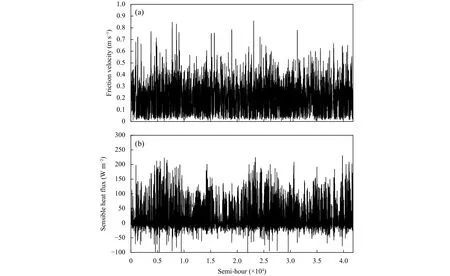
Fig. 2. As in Fig. 1, but at Jiangning.

Fig. 3. The comparison between the CAM parameterization and observation for the friction velocity at Jiangxinzhou. (a, c, e) The scatter diagram and (b, d, f) occurring probability density. (a, b) Seasonally-varying z0, (c, d) z0 = 0.01 m, and (e, f) z0 = 0.20 m.
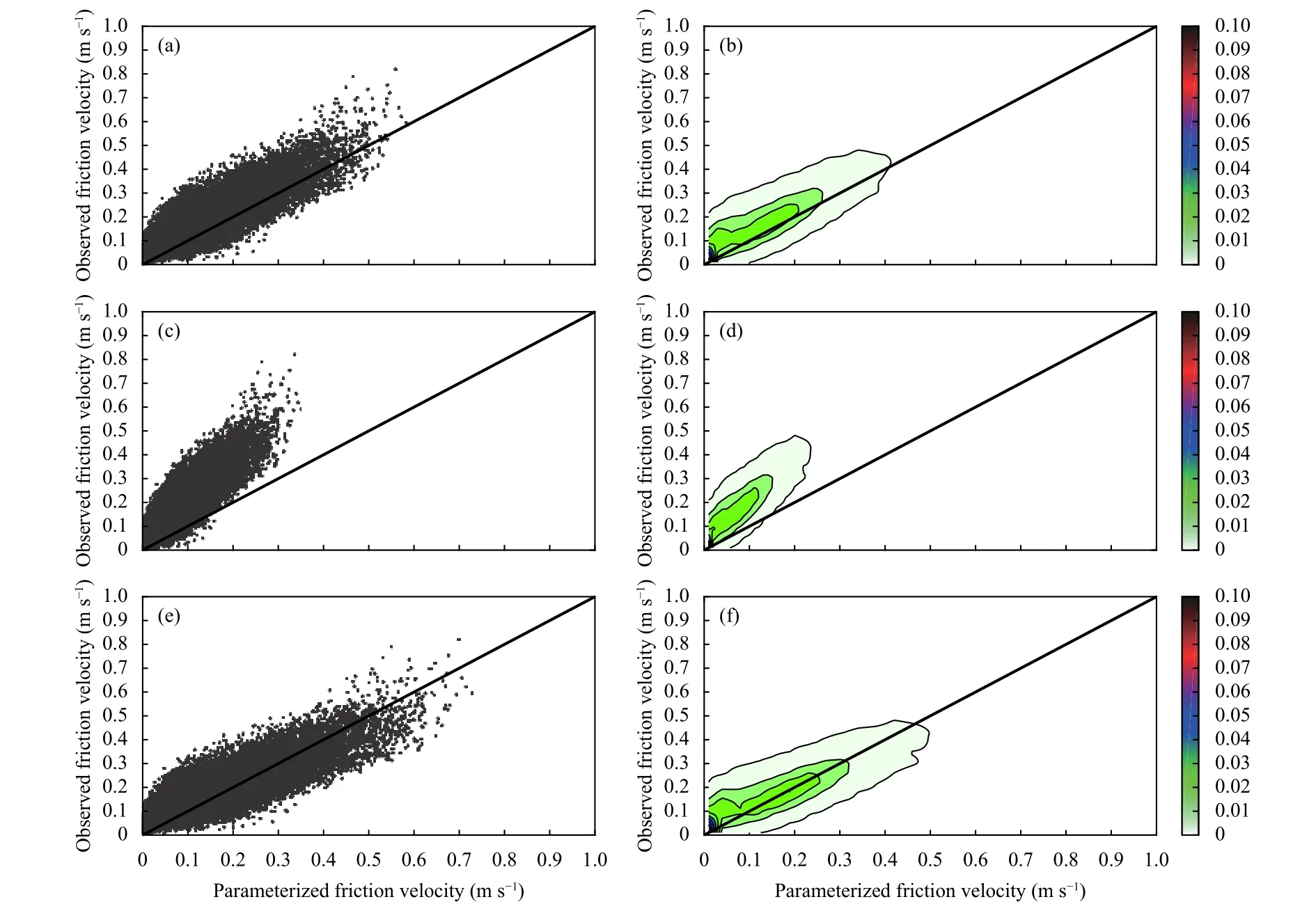
Fig. 4. As in Fig. 3, but for the comparison between the PX parameterization and observation.

Fig. 5. As in Fig. 3, but for the sensible heat flux.

Fig. 6. As in Fig. 5, but for the comparison between the PX parameterization and observation.

Fig. 7. As in Fig. 3, but at Jiangning.
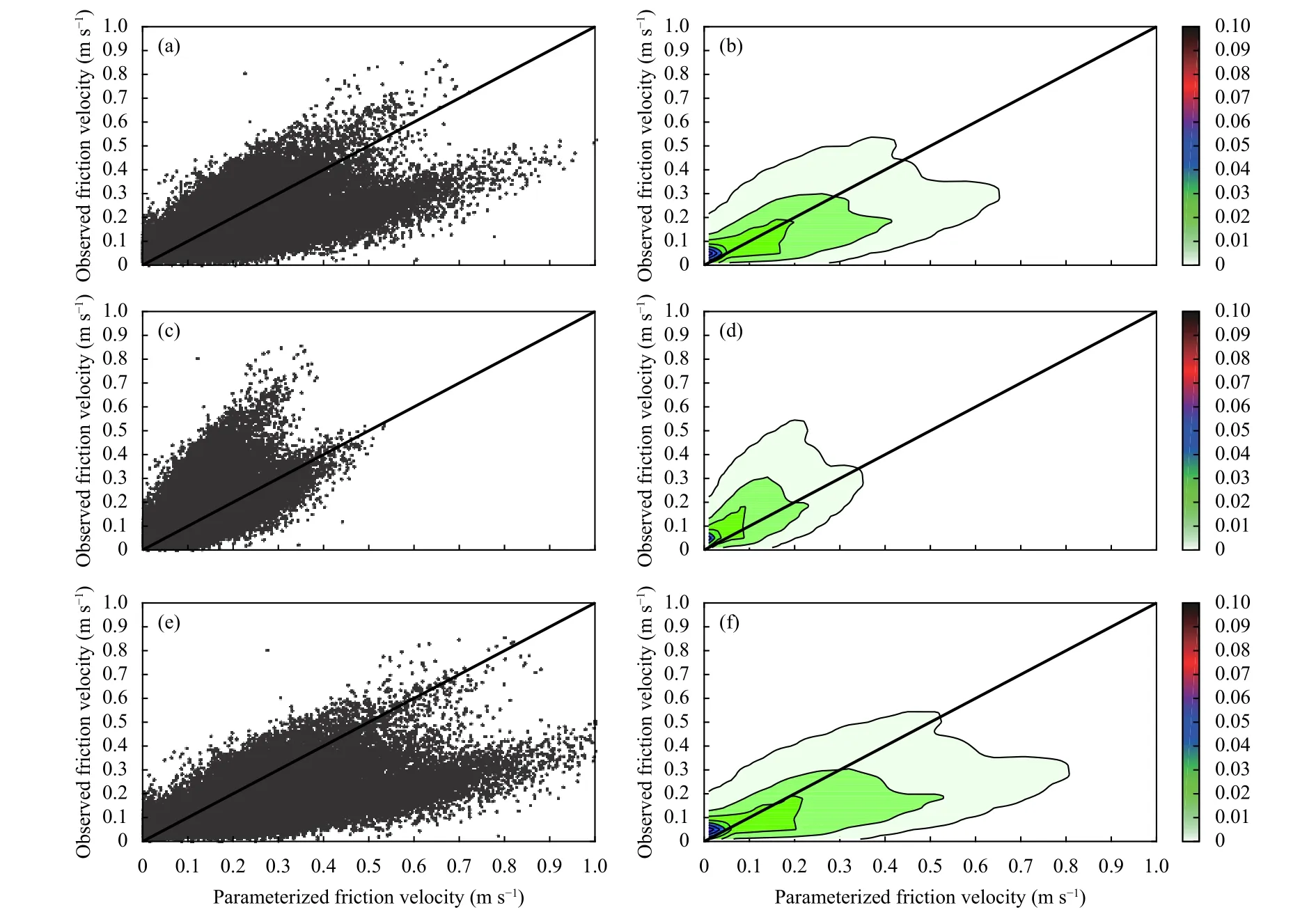
Fig. 8. As in Fig. 7, but for the comparison between the PX parameterization and observation.

Fig. 9. As in Fig. 7, but for the sensible heat flux.

Fig. 10. As in Fig. 9, but for the comparison between the PX parameterization and observation.
Figures 11 and 12 are the Taylor diagrams for the comparisons between the parameterized and observed surface turbulent fluxes. In a Taylor diagram (Taylor,2001), a dataset corresponds to a point whose coordinates are the standard deviation and correlation coefficient of the dataset. It is compared with a reference dataset (i.e., the observations in this study) that corresponds to the reference point, where the correlation coefficient of the reference dataset with itself is 1. The closer the point is to the reference point, the better the dataset is in agreement with the reference dataset statistically.
At Jiangxinzhou, for the momentum flux, the CAM and PX parameterizations reproduce the observations very well, as they have the high correlation coefficients around or above 0.8 and the standard deviations close to the observations. With= 0.01 m, the parameterizations correlate with the observations very well but underestimate the standard deviation of the observations, while the correlation is weaker and the standard deviation of the observations is overestimated with= 0.2 m. Overall, their distances from the reference point are farther,indicating that the parameterizations with seasonallyvaryingreproduce the observations better. For the sensible heat flux, the parameterizations correlate with the observations very well. With= 0.2 m and varying seasonally, the parameterizations overestimate the standard deviation of the observations. Although with=0.01 m, the parameterizations underestimate the standard deviation of the observations but are comparatively closer to the observations, indicating that the parameterizations with= 0.01 m reproduce the observations relatively better.
At Jiangning, the comparisons are generally the same.However, due to decreased correlation coefficients, the parameterized datasets are relatively farther from the reference point, indicating that the parameterizations do not reproduce the observations as well as at Jiangxinzhou.
Figure 13 shows the comparison of the relative Euclidean distance for the momentum and sensible heat flux.The relative Euclidean distanceis defined as (Wu et al., 2012; Liu et al., 2013)


Table 2. The statistics for the comparison between the parameterization and observation
According to the relative Euclidean distances, the momentum flux parameterization performs better than the sensible heat flux parameterization. While at the same site, the two parameterizations have roughly equivalent performances, and both of them perform better at Jiangxinzhou than at Jiangning. For the friction velocity, the parameterizations with seasonally-varyinghave better performance, while for the sensible heat flux, the parameterizations with= 0.01 m perform relatively better.

Fig. 13. Relative Euclidean distance between the parameterized and observed surface turbulent flux. (a) Jiangxinzhou and (b) Jiangning.Seasonally-varying z0 for CAM and PX, z0 = 0.01 m for CAM1 and PX1, and z0 = 0.20 m for CAM20 and PX20.
Figures 14 and 15 compare the diurnal pattern between the parameterized and observed surface turbulent flux. Both of the parameterizations capture the diurnal pattern seen in the observations at the two sites very well,but the parameterizations overestimate the sensible heat flux in the daytime at the sites except the two cases with the lower limit of, which slightly underestimate them in the daytime. At Jiangxinzhou, the CAM parameterization overestimates the momentum flux around the noon and the PX parameterization underestimates it throughout the day, while both of the parameterizations overestimate the momentum flux throughout the day at Jiangning, suggesting that overall the two parameterizations reproduce relatively larger momentum fluxes at Jiangning than at Jiangxinzhou. However, the difference between the two parameterizations in reproducing the momentum and sensible heat flux is not significant in terms of the statistical quantities shown in Table 2. In addition, the larger the roughness length is, the larger the parameterized flux is.
Figures 16 and 17 compare the seasonal pattern between the parameterized and observed surface turbulent flux. Both of the parameterizations capture the seasonal pattern seen in the observations at the two sites well. While over the entire year the momentum flux is slightly underestimated at Jiangxinzhou and slightly overestimated at Jiangning in terms of statistics, the sensible heat flux is overestimated at both Jiangxinzhou and Jiangning. Moreover, the parameterized sensible heat flux is larger in the spring and late summer at Jiangxinzhou and in the late summer and autumn at Jiangning.While the cause warrants further investigation and study,we infer that it may be due to larger land-air temperature difference at those times of the year. In addition, the overall difference between the parameterizations is not significant, and the parametrized fluxes increase with increased.

Fig. 14. The comparison of diurnal pattern for the parameterized and observed surface turbulent flux at Jiangxinzhou. (a) Friction velocity and (b) sensible heat flux. Seasonally-varying z0 for CAM and PX, z0= 0.01 m for CAM1 and PX1, and z0 = 0.20 m for CAM20 and PX20.
5. Conclusions and discussion
Field measurements of the turbulent momentum and sensible heat flux in the surface layer were conducted over homogenous and flat grassland in two meteorological observing yards in the suburb of Nanjing, eastern China for longer than 2 yr. The variances of the turbulent observational data display consistent statistical characteristics,and the values of fitted coefficients are close to those suggested by Stull (1997). The flux observational data are then used to evaluate the CAM and PX parameterization schemes reproducing the turbulent momentum and sensible heat flux in the surface layer. It is found that the momentum flux parameterizations are in good agreement with the observations, while the sensible heat flux parameterizations overestimate the observations, which is in coincidence with previous research (Liu et al., 2013,2017).
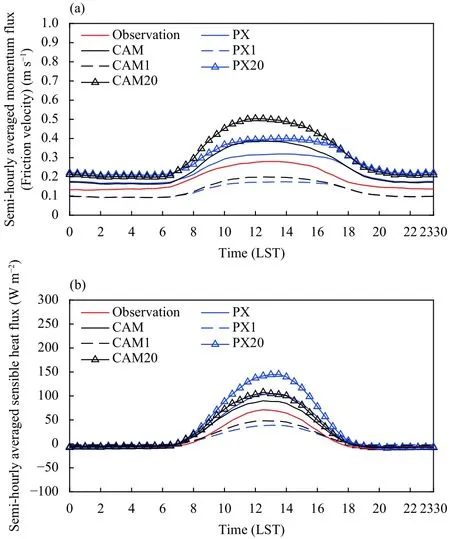
Fig. 15. As in Fig. 14, but at Jiangning.
Overall, the momentum flux parameterizations reproduce the observations very well in terms of the root mean square error and mean bias. In the Taylor diagram, compared to the sensible heat flux parameterizations, the momentum flux parameterizations are close to the observations, as the centered root mean square error (i.e., the distance between the parameterization and observation point) for the momentum flux is less, indicating that the momentum flux is better reproduced than the sensible heat flux. The relative Euclidean distance between the parameterization and observation for the momentum flux is less than that for the sensible heat flux. The momentum flux parameterizations capture the diurnal and seasonal patterns seen in the observations very well.While the momentum flux is underestimated at Jiangxinzhou in terms of seasonal pattern, the sensible heat flux is overestimated at Jiangning in terms of both diurnal and seasonal patterns.
The sensible heat flux parameterizations systematically overestimate the observations in terms of the root mean square error and mean bias. In the Taylor diagram,the distance between the parameterization and observation point is farther, and the relative Euclidean distance between the parameterization and observation is larger,indicating that the reproduction of the observations by the parameterizations for the sensible heat flux is not so good as for the momentum flux. The parameterizations also capture the diurnal and seasonal patterns seen in the observations well, but the parameterizations overestimate the observations in the daytime in diurnal pattern and over the entire year in seasonal pattern. The results are also in coincidence with previous research (Liu et al.,2013, 2017).

Fig. 16. The comparison of seasonal pattern for the parameterized and observed surface turbulent flux at Jiangxinzhou. (a) Friction velocity and (b) sensible heat flux. Seasonally-varying z0 for CAM and PX,z0 = 0.01 m for CAM1 and PX1, and z0 = 0.20 m for CAM20 and PX20.
It should be kept in mind that the correlation between the observation and parameterization is overall high due to the nature of the data in this study. Since the observed ground temperature that drives the sensible heat flux and the observed wind speed that drives the friction velocity are driven by the solar cycle and increase and decrease predictably over the diurnal cycle, the parameterized fluxes do as well, and the correlation between the observation and parameterization is predictably high. Therefore, most focus should be on the RMSE and MB.
One of the causes why the momentum flux parameterization performs better than the sensible heat flux parameterization could be the difference of temperature between the land and atmosphere (Liu et al., 2013, 2017).Theoretically, the surface air temperature, which is the air temperature at the height of the thermal roughness lengthz0h, should be used. However, due to the difficulty of determiningz0haccurately at present, the surface air temperature is hard to measure as well as to calculate;in reality, the ground temperature is used for the replacement of the surface air temperature. While the surface air temperature is not needed in the parameterization of the momentum flux, this reduces the error between the parameterized and observed momentum flux compared to the sensible heat flux.
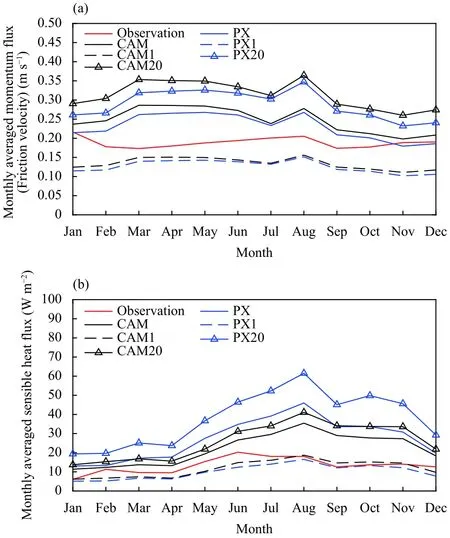
Fig. 17. As in Fig. 16, but at Jiangning.
In general, the difference between the parameterizations in reproducing the momentum and sensible heat flux is not significant in terms of statistical quantities.This conclusion should be reasonable and expected, since the parameterizations are constructed on the common framework of theory (i.e., the Monin-Obukhov Similarity Theory). Overall, the parameterizations perform better at Jiangxinzhou than at Jiangning in terms of the correlation coefficient, of which the reason is to be explored in further analysis.
Checking the effect of the roughness lengthon the parameterization indicates that the parameterized fluxes increase with increased. That is to say, when the parameterization with smallerunderestimates the flux, the parameterization with largermay reproduce the flux better. However, when the parameterization with smalleralready overestimates the flux, the parameterization with largermay overestimate the flux further, and vice versa.
In general, improving the performance of a flux parameterization scheme has to involve with many factors(Liu et al., 2013, 2017). This evaluation suggests that among many factors that could contribute to improvement of a scheme of surface turbulent flux parameterization, how to determine the surface air temperature and improve the common theoretical framework of the Monin-Obukhov Similarity Theory may stand out, although some progresses have been made in recent years, especially on the applicability of the Monin-Obukhov Similarity Theory under stable conditions (e.g., Chenge and Brutsaert, 2005; Grachev et al., 2007; Sharan and Kumar,2011; Li et al., 2014). In addition, since this evaluation is conducted against field observational data in eastern China, it also provides a practical knowledge of the comparison between the fluxes estimated by the surface layer parameterization schemes and those measured by insitu observations and is helpful in understanding the performance of the parameterizations in the region.
Acknowledgments.The authors declare that there is no conflict of interest regarding the publication of this paper. The authors thank the anonymous reviewers for their constructive criticism and comments, which have greatly helped to improve the quality of this study.
杂志排行
Journal of Meteorological Research的其它文章
- The CAMS Climate System Model and a Basic Evaluation of Its Climatology and Climate Variability Simulation
- An Assessment of CAMS-CSM in Simulating Land-Atmosphere Heat and Water Exchanges
- Arctic Climate Changes Based on Historical Simulations (1900-2013) with the CAMS-CSM
- Impacts of Land-Use Data on the Simulation of Surface Air Temperature in Northwest China
- Modeling Study of Foehn Wind Events in Antarctic Peninsula with WRF Forced by CCSM
- Identification Standard for ENSO Events and Its Application to Climate Monitoring and Prediction in China
